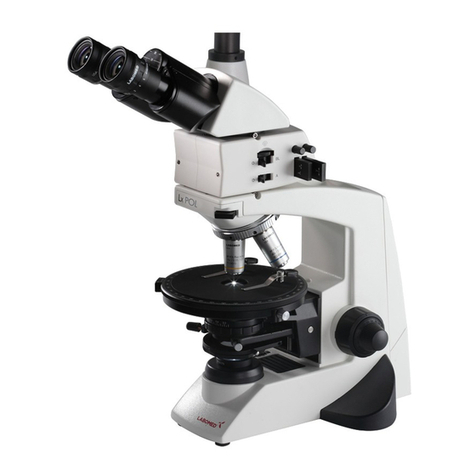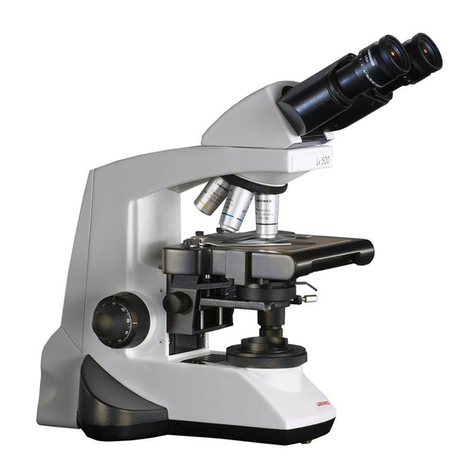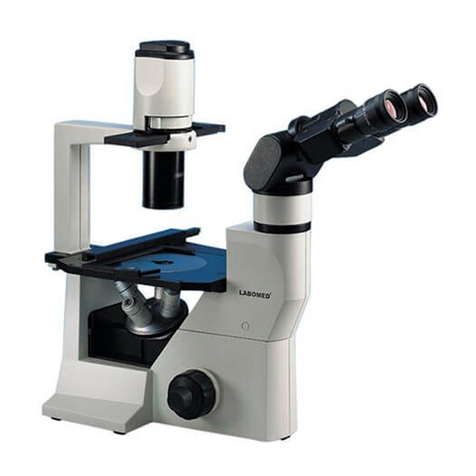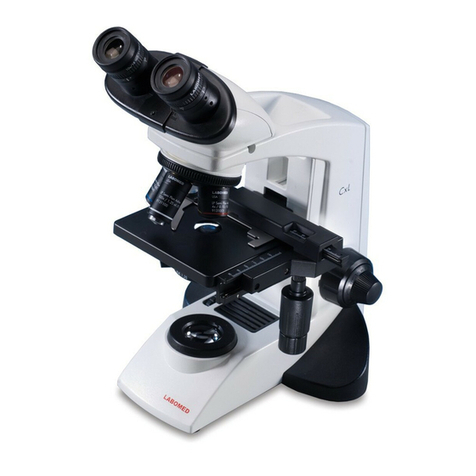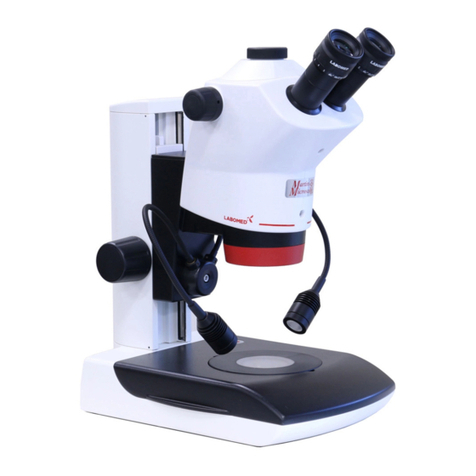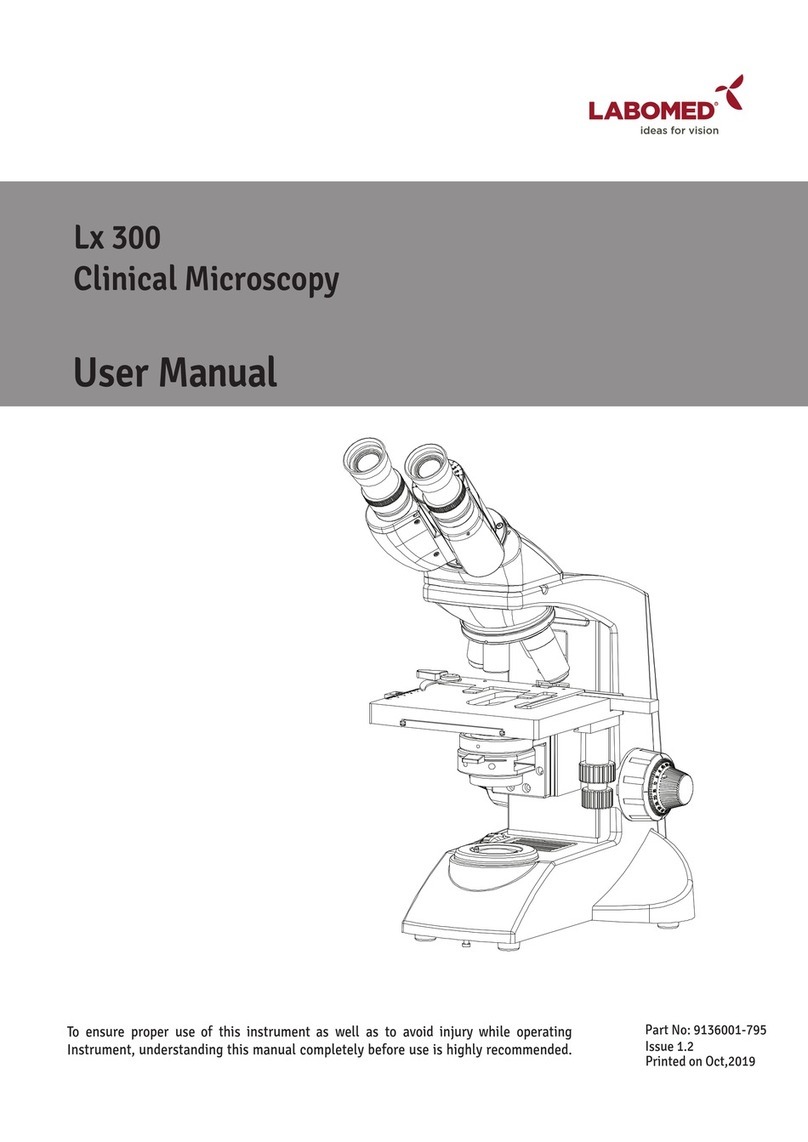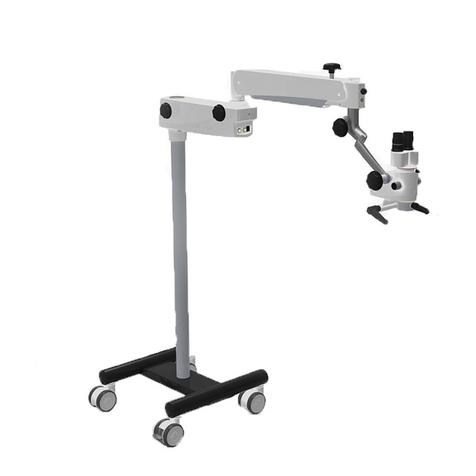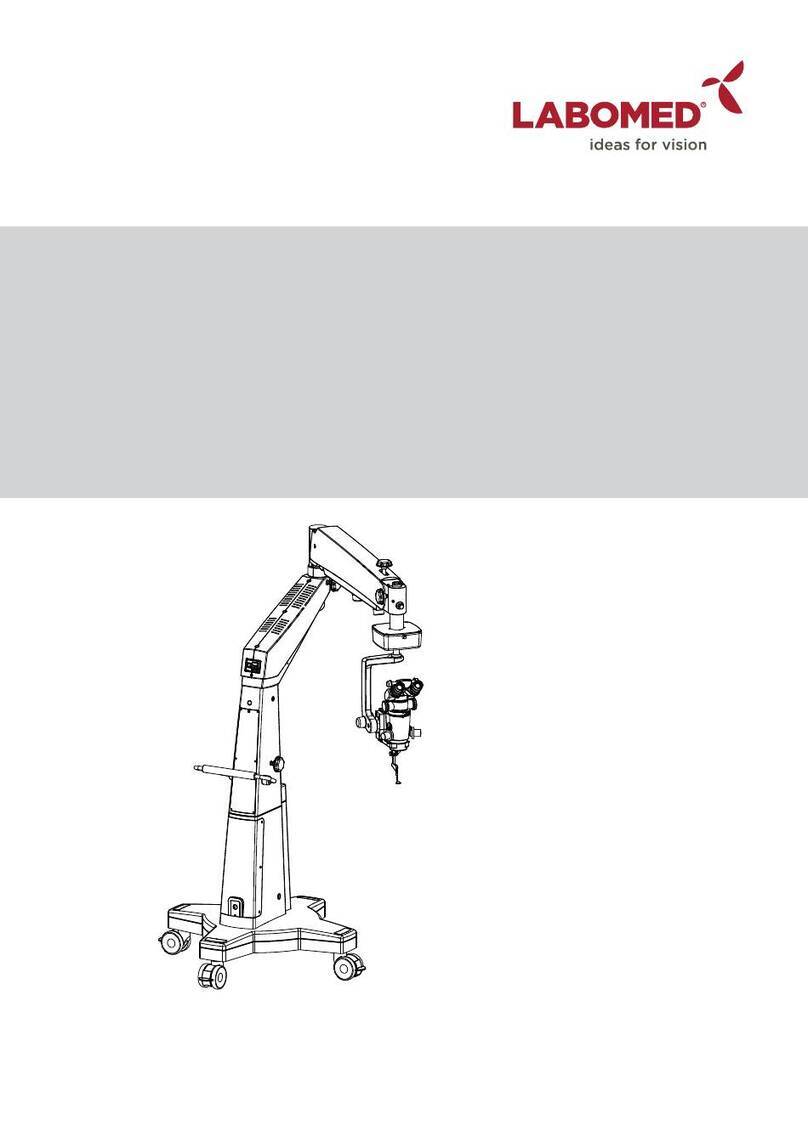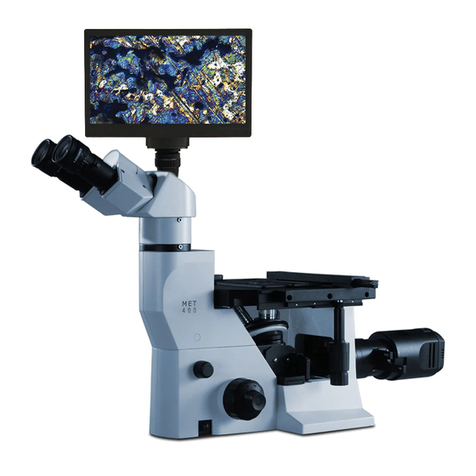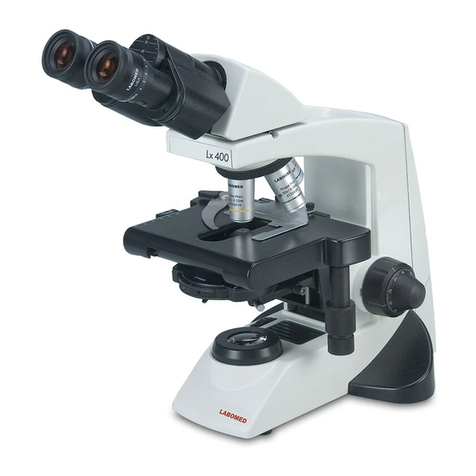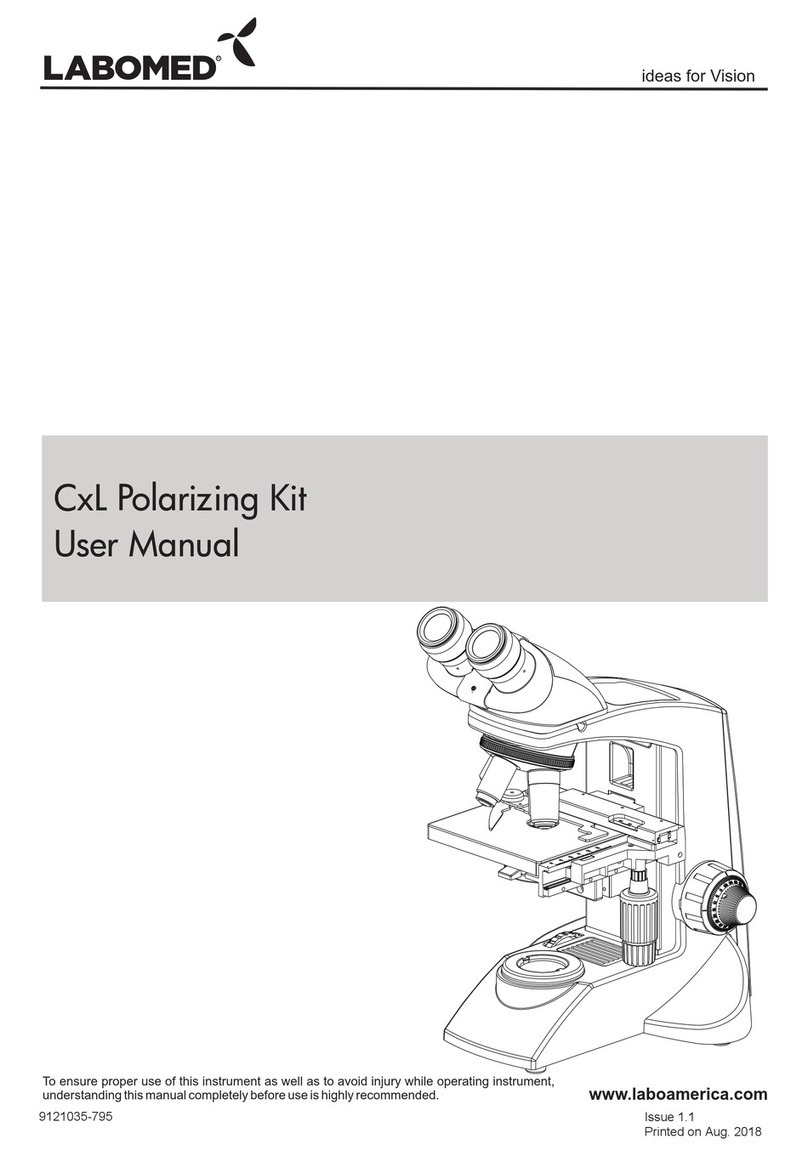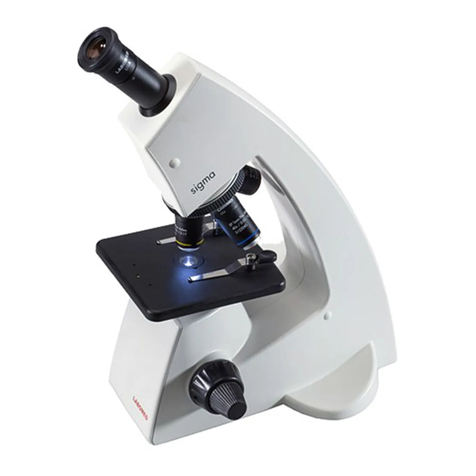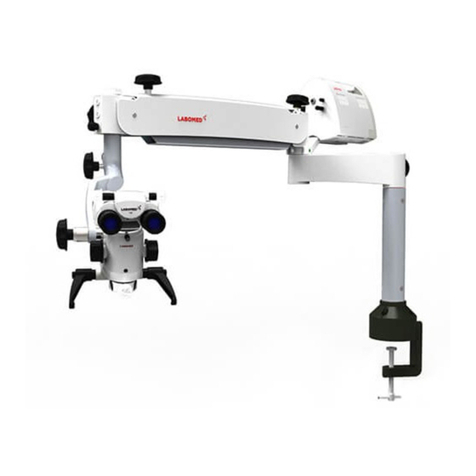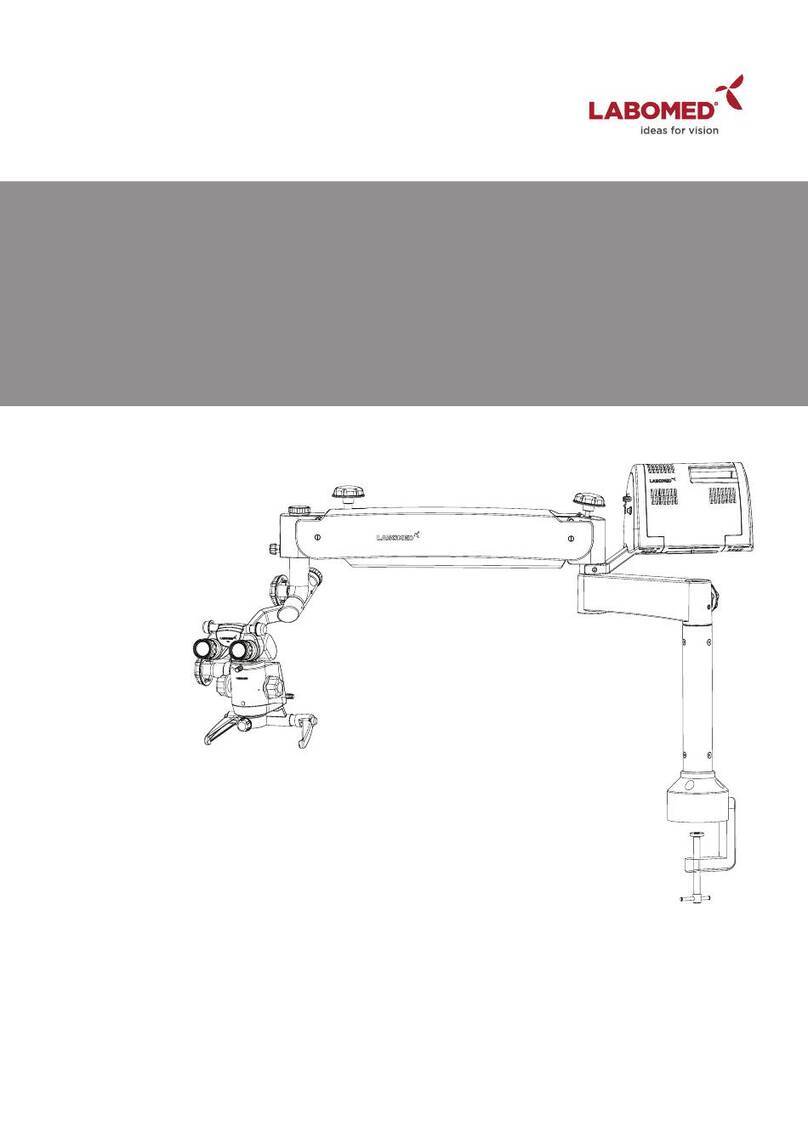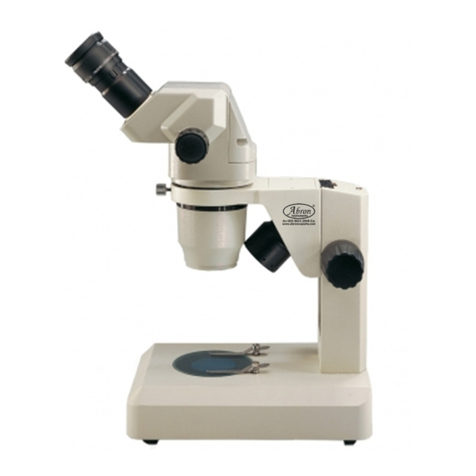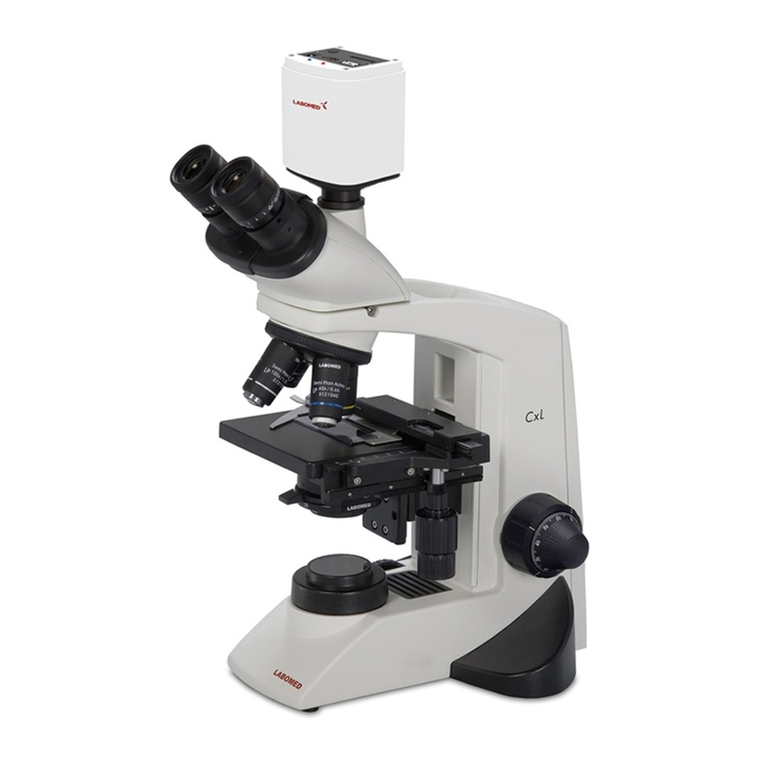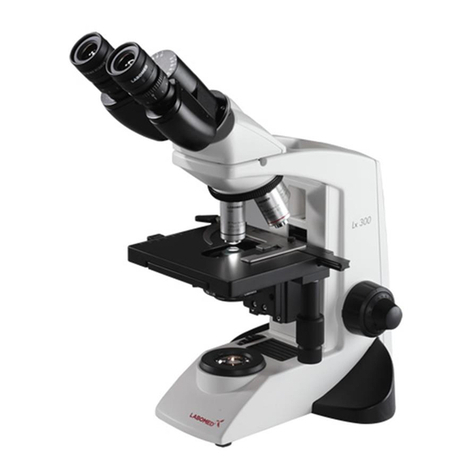
5
SAFETY INFORMATION (CONTINUED)
2.3 CARE & MAINTENANCE INSTRUCTIONS
1. General Instructions
•Protect the stereo microscope from moisture, fumes and acids and from alkaline, caustic and
corrosive materials.
• Protect the stereo microscope from oil and grease. Never grease or oil mechanical parts or sliding
surfaces.
•Follow the instructions of the disinfectant manufacturer.
•We recommend concluding a service contract with Labomed.
2. Cleaning the lenses
To clean the lens surfaces, remove dust using a soft brush or gauze (compressed air dust cans are
ideal). For removing finger marks or grease, soft cotton cloth/ lens tissue or gauze lightly moistened
with cleaning solution ( 85% petroleum ether and 15% isopeopanol) should be used. For cleaning the
optics, use xylene. Observe sufficient caution in handling xylene.
Cleaning procedure
Place the eyepieces on the dust-free surface (e.g. fresh aluminum foil). All other optical components
to be cleaned should be as accessible as possible.
a. Blow all loose dust particles away with a dust blower.
b. Remove all water-soluble dirt with distilled water. If this is unsuccessful repeat using a solution of
diluted hand soap liquid. Remove any remaining residue with a dry cotton swab.
c. To remove oil, use a solution of diluted hand-soap liquid initially. If this does not produce a satisfac-
tory result, repeat the cleaning using a solvent (Optical Cleaning Solution 85% petroleum ether and
15% isopropanol).
d. Grease must always be removed using a solvent.
e. Cleaning is achieved by using a spiral motion from the center to the rim. Never wipe using zig-zag
movements as this will only spread the dirt. With larger optical surfaces (e.g. tube lenses) the spiral
motion starts initially at the rim before to the middle and is only then followed by a center to rim
cleaning motion. Normally several spiral wipes are recommended. We recommend pure, volatile
petroleum ether or Optical Cleaning Solution as explained in point 3 above.
Zig-Zag motion Spiral motion
Wipe using a spiral movement. Do not use a zig-zag motion!
3. Cleaning of painted surfaces
Avoid the use of any organic solvent (e.g. thinner, xylene, ether, alcohol etc.) for cleaning of painted
surfaces of the instrument. Painted surfaces can be cleaned with a very lightly moistened micro fiber
cloth. Loose dust and dirt can be removed using a brush of soft hair used exclusively for this purpose.
Luxeo 6i
4147100-795 Luxeo 6i Issue 1.0
Printed on Jan.,2021
